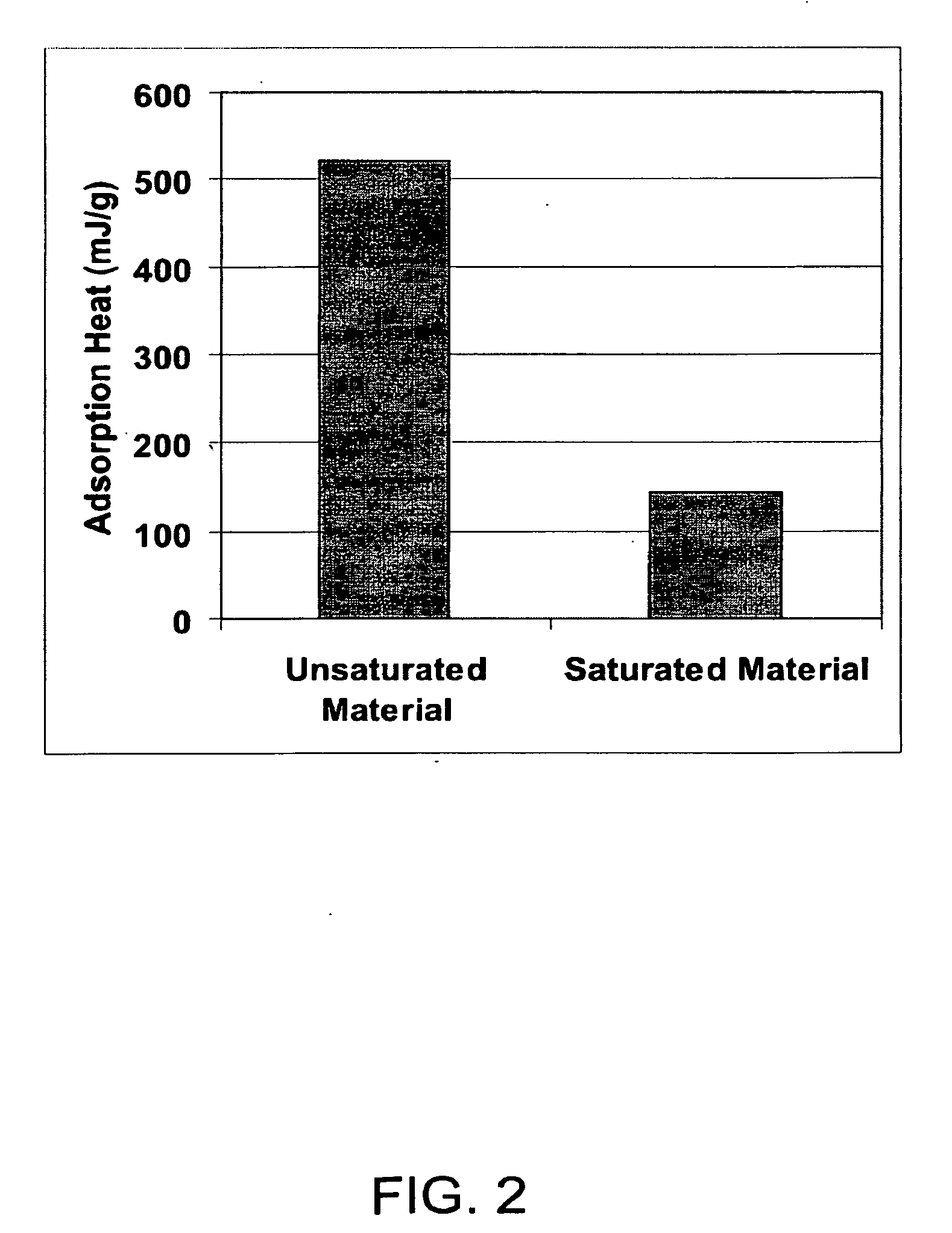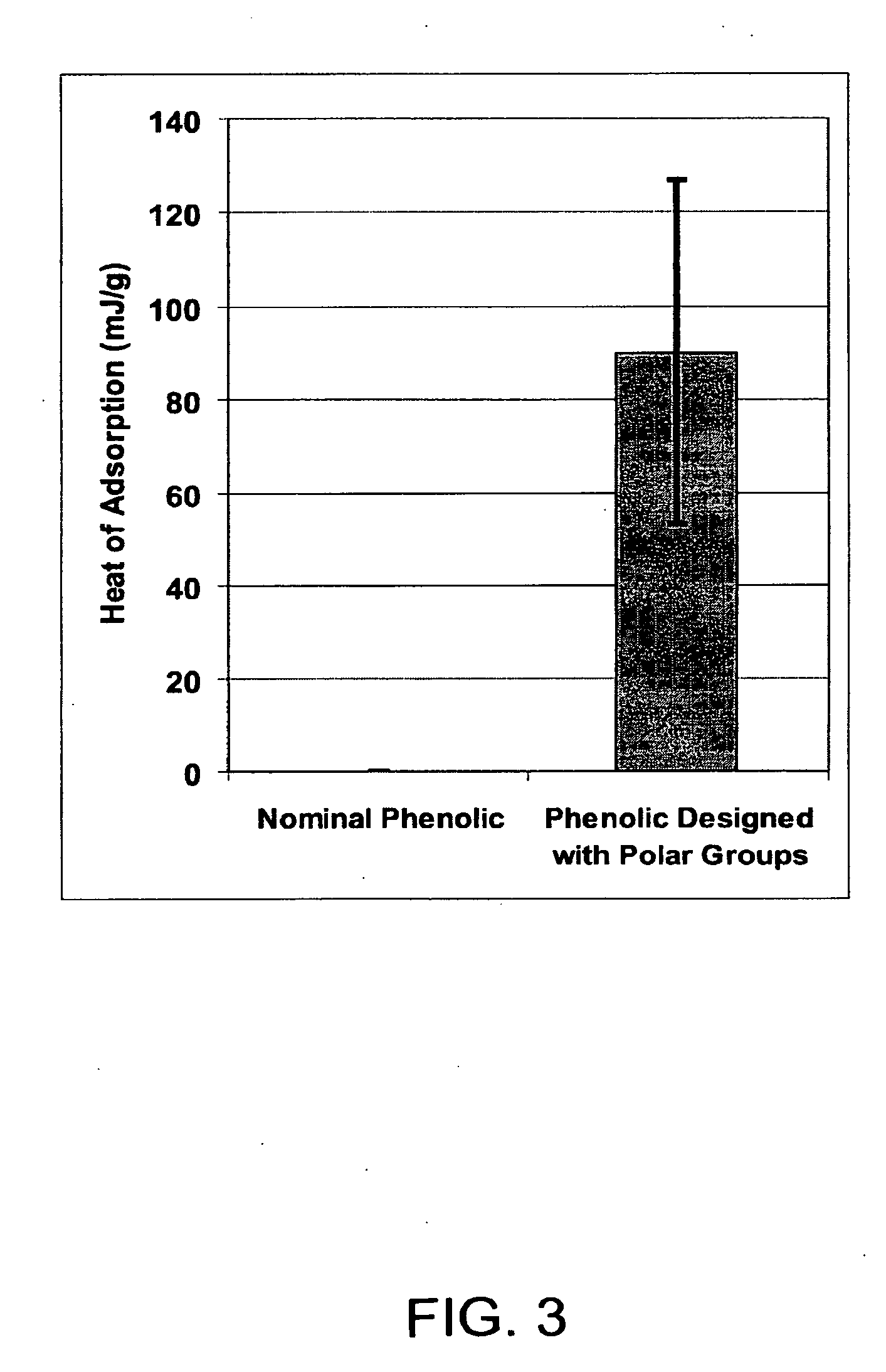Friction Materials Made With Resins Containing Polar Functional Groups
a technology of functional groups and friction materials, which is applied in the direction of friction lining, other chemical processes, mechanical instruments, etc., can solve the problems of affecting performance, resin surface does not adsorb lubricant additives, and does not bond well to some friction material components, so as to increase both dynamic and static coefficients of friction, strong interaction or higher heats-of-adsorption
- Summary
- Abstract
- Description
- Claims
- Application Information
AI Technical Summary
Benefits of technology
Problems solved by technology
Method used
Image
Examples
example 1
[0056]Low energy friction material saturated with Resin A: A phenolic resin modified to contain hydroxyl groups possessing a surface affinity (heat-of-adsorption to 0.2% aminodecane) of 100 mJ / g. This resin was incorporated into a friction composite and tested for both friction level and friction μ-v characteristic. The friction characteristics were contrasted against those of the same friction material saturated with a conventional phenolic. Charts of the midpoint dynamic coefficient-of-friction for both materials made with Resin A and the conventional phenolic are shown in FIG. 6. Charts of the torque trace taken from a break-in cycle shows improved >-v characteristic for both materials made with Resin A and the conventional phenolic are shown in FIG. 7. In both cases there was an improvement over the conventional resin system.
example 2
[0057]A moderate energy friction material saturated with Resin A: A phenolic resin modified to contain hydroxyl groups possessing a surface affinity (heat-of-adsorption to 0.2% aminodecane) of 100 mJ / g. This resin was incorporated into a friction composite and tested for both friction level and friction μ-v characteristic. The friction characteristics were contrasted against those of the same friction material saturated with a conventional phenolic. Charts of the midpoint dynamic coefficient-of-friction for both materials made with Resin A and the conventional phenolic are shown in FIG. 8. Charts of the torque trace taken from a break-in cycle shows improved μ-v characteristic for both materials made with Resin A and the conventional phenolic are shown in FIG. 9. In both cases there was an improvement over the conventional resin system.
example 3
[0058]Low energy friction material saturated with Resin B: A phenolic resin modified to contain hydroxyl groups possessing a surface affinity (heat-of-adsorption to 0.2% aminodecane) of 200 mJ / g. This resin was incorporated into a friction composite and tested for both friction level and friction 1-v characteristic. The friction characteristics were contrasted against those of the same friction material saturated with a conventional phenolic. Charts of the midpoint dynamic coefficient-of-friction for both materials made with Resin A and the conventional phenolic are shown in FIG. 10. Charts of the torque trace taken from a break-in cycle shows improved 1-v characteristic for both materials made with Resin A and the conventional phenolic are shown in FIG. 11. In both cases there was an improvement over the conventional resin system.
PUM
| Property | Measurement | Unit |
|---|---|---|
| pore diameter | aaaaa | aaaaa |
| heat-of-adsorption | aaaaa | aaaaa |
| concentration | aaaaa | aaaaa |
Abstract
Description
Claims
Application Information
 Login to View More
Login to View More - R&D
- Intellectual Property
- Life Sciences
- Materials
- Tech Scout
- Unparalleled Data Quality
- Higher Quality Content
- 60% Fewer Hallucinations
Browse by: Latest US Patents, China's latest patents, Technical Efficacy Thesaurus, Application Domain, Technology Topic, Popular Technical Reports.
© 2025 PatSnap. All rights reserved.Legal|Privacy policy|Modern Slavery Act Transparency Statement|Sitemap|About US| Contact US: help@patsnap.com



